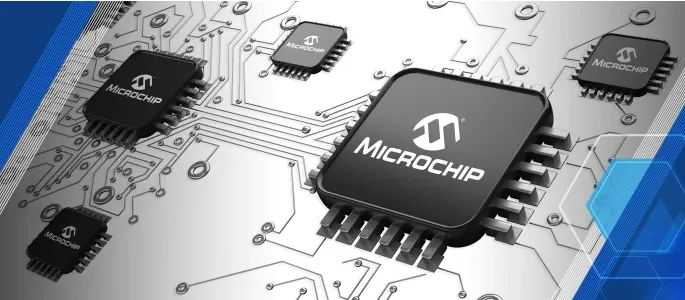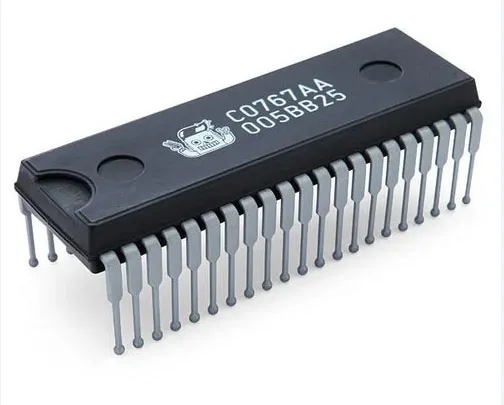Deciphering Variances: Semiconductor vs Microchip vs Integrated Circuit
The phrases semiconductor, microchip, and integrated circuit are frequently interchangeable. While there are numerous similarities among them, allowing for their interchangeable use in high-level discussions, it's essential to acknowledge that they exhibit notable technical differences.
![]()
Now, let's examine each of these individually and delve into their distinctive characteristics.
What defines a semiconductor?
A semiconductor is a material whose conductivity falls between that of a conductor and an insulator at room temperature, and this conductivity can be modulated within this range. As the name suggests, a semiconductor is a substance that conducts current only partially.
Due to these properties, semiconductors are omnipresent in electronics, being integral to devices ranging from electronic calculators and mobile phones to gaming consoles and personal computers. Typically, semiconductors take the form of crystals composed of specific materials, with silicon being the most widely used in electronic applications.
Nonetheless, pure silicon on its own lacks practical utility for the applications required. To enhance the conductivity of a silicon crystal and render it more useful, small quantities of other elements, such as phosphorus or boron, are typically introduced through a process known as 'doping.' This process allows the creation of either an N-type semiconductor (with phosphorus) or a P-type semiconductor (with boron).
When voltage is applied to either an N-type or P-type semiconductor, the movement of electrons is influenced by the negative side of the voltage pushing them and the positive side pulling them. This interaction generates a measurable electric current.
Both microchips and integrated circuits rely on semiconductors as their fundamental materials.
What is a microchip?

A microchip, also referred to as a computer chip, comprises electronic circuits meticulously etched onto a small, flat piece of silicon. Within the chip, transistors serve as minuscule electrical switches capable of toggling a current on or off. The intricate pattern of these tiny switches is crafted on the silicon wafer through the addition and removal of materials, forming a multi-layered lattice of interconnected shapes.
The astonishing capability of microchips becomes apparent when considering that on a chip no larger than the average human fingernail, there exist billions of transistors. The operations occur on such a microscopic scale that chip features are measured in nanometers – equivalent to one billionth of a meter (or a millionth of a millimeter).
As chip fabrication processes advance, the size of microchips is progressively shrinking each year, accompanied by continual enhancements in performance. As of 2022, the standard transistor length stands at 10nm, but industry leaders like TSMC are already manufacturing chips with 5nm and 7nm dimensions, with aspirations to further reduce their size.
This ongoing progress is the driving force behind the substantial surge in computing power, propelling technology to its current state of advancement.
What is an integrated circuit?

An integrated circuit (IC) refers to a minute electronic device or component that has evolved into a microstructure encompassing essential circuit functions. All constituent elements are integrated into a unified whole, marking a significant stride toward miniaturization, low power consumption, and intelligence in electronic components. The transistors, resistors, capacitors, inductors, and other required circuit components and connections undergo a specific process, being fabricated on one or multiple small semiconductor wafers or dielectric substrates, and are subsequently enclosed in a package.
In circuit notation, it is symbolized by the letters "IC." Jack Kilby and Robert Noyth are credited with pioneering integrated circuits based on silicon (Si) and germanium (Ge), respectively. Presently, the majority of applications in the semiconductor industry are dominated by silicon-based integrated circuits.
The integrated circuit, a groundbreaking semiconductor device, emerged in the late 1950s and early 1960s. It amalgamates semiconductors, resistors, capacitors, and other essential circuit components, along with connecting lines, into a diminutive Silicon on a Chip. This assembly is then encased in a package with various shapes, including round, flat, and double-row configurations.
Integrated circuits encompass both chip manufacturing technology and design technology, primarily manifested through processing tools, packaging and testing techniques, mass production methodologies, and design innovation capabilities.
Various types of integrated circuits (IC)
Memory Chips
Memory chips are utilized to store data and programs on computers and data storage devices. Random-access memory (RAM) chips serve as temporary workspaces, while flash memory chips retain information permanently until erased. Read-only memory (ROM) and programmable read-only memory (PROM) chips are unalterable.
Graphic Processing Units (GPUs)
A Graphics Processing Unit (GPU) is a specific microprocessor responsible for rendering graphics on electronic devices. Introduced in the late 1990s, GPUs are renowned for their applications in contemporary video games. Before the advent of GPUs, graphic rendering was handled by the Central Processing Unit (CPU).
Microprocessors
A microprocessor, while falling under the category of integrated circuits, distinguishes itself by serving as a computing brain. Unlike other integrated circuits (ICs), a microprocessor can execute logical and arithmetic instructions programmed into it, functioning as a central processing unit (CPU) in the eyes of most consumers.
Analog Chips
An analog chip typically incorporates a transistor along with passive elements like inductors, capacitors, and resistors. Analog chips are more susceptible to noise, involving small voltage variations that may lead to errors. Consequently, digital chips have largely replaced analog chips. However, some applications, such as power supplies, continue to rely on analog chips, and they remain prevalent in sensor applications.
The difference between integrated circuits and chips
Diverse Impact
The ongoing adherence to Moore's Law, stating the doubling of transistors in integrated circuits every 1.5 years, allows for increased circuit density on chips. This heightened capacity per unit area contributes to cost reduction and enhanced functionality. Integrated circuits, by consolidating all component parts into a single unit, significantly advance miniaturization, low power consumption, intelligence, and the reliability of electronic components. ICs, housed on a pea-sized material, can accommodate hundreds of thousands of discrete transistors, a feat unattainable with bulky and costly vacuum tubes. The advent of integrated circuits laid the foundation for information age technology, permeating various industries such as automotive, appliances, and entertainment.
Varied Shapes and Packages
Chips, typically produced on semiconductor wafers, provide a means of miniaturizing circuits. The widely adopted Dual In-Line Package (DIP) standard, with pins spaced apart at multiples of 0.1 inches and 2.54 mm, facilitates assembly and alignment on a board. ICs, integral for contemporary civilization, are encased in protective packages for ease of handling and to prevent damage. Various package types, registered with industry organizations like JEDEC and ProElectron, undergo standardized dimensions and tolerances. IC packaging, a crucial step before product testing and shipping, offers options ranging from the familiar DIP to advanced designs like the Flip Chip Ball Grid Array (FCBGA).
Diverse Manufacturing Techniques
Integrated circuits interconnect transistors, resistors, capacitors, and inductors through a specific fabrication process. This process occurs on small semiconductor wafers or dielectric substrates, with the resulting chips then packaged. Beginning with a single crystal silicon wafer, technologies like lithography, doping, chemical-mechanical planarization (CMP), and thin film techniques are employed to create components like MOSFET or BJT, as well as wiring. Integrated circuits are often colloquially referred to as chips due to their similarity in surface IC packaging. The evolution of semiconductor technology and fabrication techniques led to the creation of integrated circuits, replacing vacuum tubes and enabling the development of compact and affordable computers.
The Bottom Line
Though these terms are often used interchangeably, they generally refer to the same concept at a high level. It's important to note that semiconductors serve as the fundamental materials in both microchips and integrated circuits, playing a pivotal role in enabling the technologies we often take for granted today.
Integrated circuit chip: Types, Applications, and FAQ
Microprocessor Vs Integrated Circuit: What’s the Differences?
What is an Integrated Circuit (IC)? Working, and Types (Guide)
Circuit Breakers:Types and Applications
BTA16-600B Circuit: Features, Specification and Applications
Air Circuit Breaker:Features, Specification and Applications
556 Timer Circuits: Features, Specification and Applications
What is Hartley Oscillator: Circuit, Working, and its Applications
Film vs Ceramic Capacitor: What's the Differences?
How Long Do Electrolytic Capacitors Last [Explained]










